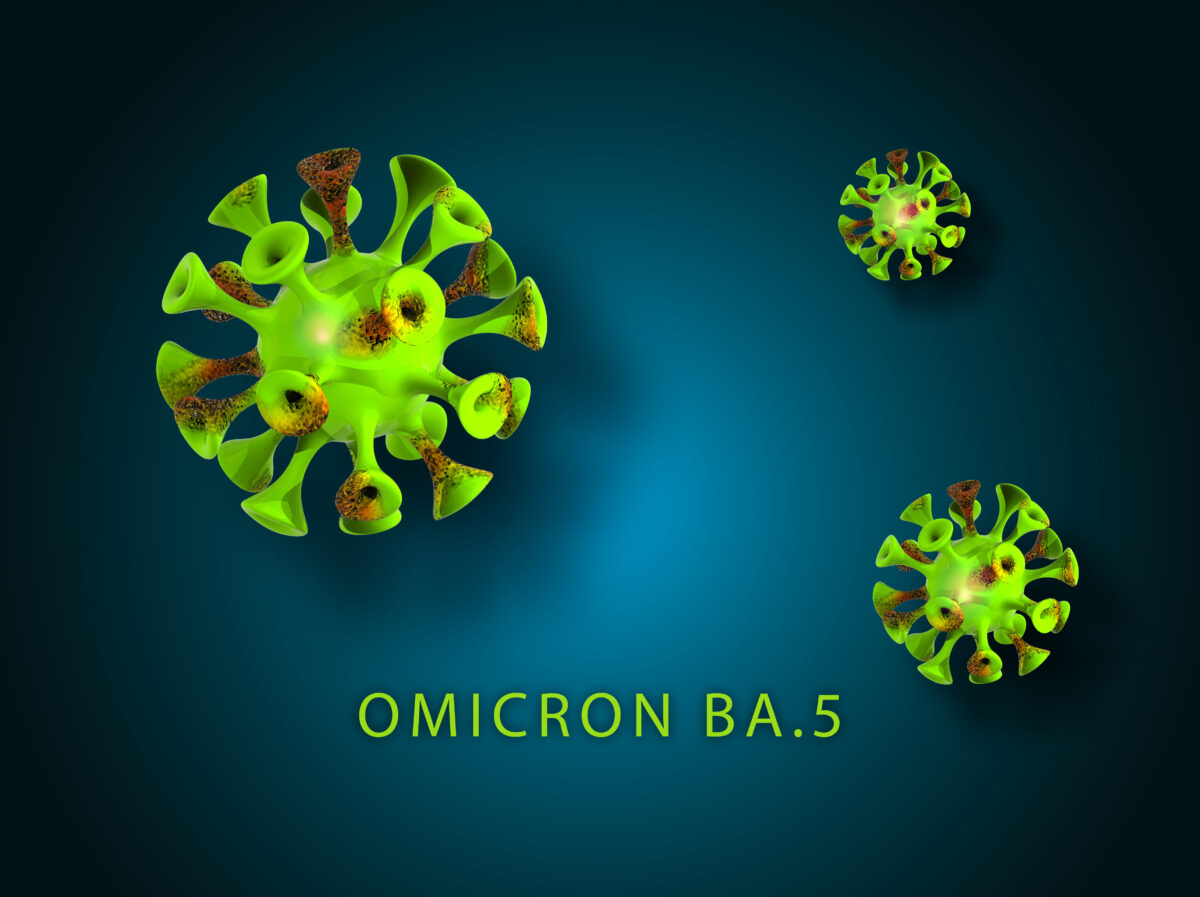The Omicron variant of SARS-CoV-2 was first reported to the World Health Organization (WHO) on November 24, 2021, by a viral surveillance organization from South Africa.1 The earlier subvariants of Omicron, BA.1 and BA.2, were found to be more infectious than previous SARS-CoV-2 variants such as Delta and could infect even those who had received three doses of a COVID-19 vaccine, though vaccination was still instrumental in preventing hospitalization and mortality resulting from infection.2,3 The genomes of these earlier Omicron subvariants contain more mutations than any of the previous SARS-CoV-2 variants. Most of these mutations are located in the genomic region encoding for the viral spike protein, which the virus uses to bind and enter host cells.4
In April 2022, two new Omicron subvariants were identified by scientists in South Africa. Classified as BA.4 and BA.5, the subvariants are similar to BA.1 and BA.2 but contain additional mutations in the spike protein that may render them even more infectious and resistant to immune responses.5 The subvariants are estimated to have emerged in mid-December 2021, while their most recent ancestor originated a month earlier.6 Like the earlier Omicron subvariants, BA.4 and BA.5 contain the 69-70del mutation, a six-nucleotide deletion in the viral spike protein gene that results in the deletion of two amino acids. The Thermo Fisher Scientific TaqPath™ SARS-CoV-2 detection kit targets the S gene but fails to do so in the presence of 69-70del, which enables the detection of specific Omicron subvariants like BA.4 and BA.5.7
Preliminary research has shown that immunity against BA.1 and BA.2 is insufficient in preventing BA.4 and BA.5 infection. An international team of researchers reported that FDA-approved monoclonal antibodies against BA.1 and BA.2 lost their neutralizing activity when tested against BA.4 and BA.5.8 The efficacy of antiviral therapeutic drugs such as Remdesivir (which inhibits the viral RNA polymerase) and Nirmatrelvir (inhibits the main viral protease) perform just as well against BA.4 and BA.5 as they do against earlier Omicron subvariants, though the researchers acknowledge that their lack of clinical data prevents them from drawing actionable conclusions (their findings were reported in a “Letter to the Editor,” which is peer-reviewed but not as extensive as a full manuscript).
A similar study was conducted by Tuekprakhon et al., though they used the serum from people with three SARS-CoV-2 vaccine doses to determine the extent to which vaccine-induced antibodies could neutralize BA.4 and BA.5.9 They found that this serum had a 2 to 3-fold reduction in neutralization capability against BA.4 and BA.5 as compared to its capability when measured against BA.1 and BA.2. The implications of such a finding, the authors conclude, is that those with immunity against BA.1 and BA.2 could be infected by the newer Omicron subvariants.
According to CDC data, BA.4 and BA.5 have rapidly overtaken the earlier subvariants as the most dominant Omicron subvariants currently circulating in the US.10 In the coming months, more research will emerge on the infectiousness and virulence of these subvariants, but for now, the public and public health experts alike should recognize that the next phase of the COVID-19 pandemic is well underway.
References
- Classification of Omicron (B.1.1.529): SARS-CoV-2 Variant of Concern. https://www.who.int/news/item/26-11-2021-classification-of-omicron-(b.1.1.529)-sars-cov-2-variant-of-concern.
- CDC. Omicron Variant: What You Need to Know. Centers for Disease Control and Prevention https://www.cdc.gov/coronavirus/2019-ncov/variants/omicron-variant.html (2022).
- Altarawneh, H. N. et al. Effects of Previous Infection and Vaccination on Symptomatic Omicron Infections. N. Engl. J. Med. 387, 21–34 (2022), DOI: 10.1056/NEJMoa2203965
- Khandia, R. et al. Emergence of SARS-CoV-2 Omicron (B.1.1.529) variant, salient features, high global health concerns and strategies to counter it amid ongoing COVID-19 pandemic. Environ. Res. 209, 112816 (2022), DOI: 10.1016/j.envres.2022.112816
- Callaway, E. What Omicron’s BA.4 and BA.5 variants mean for the pandemic. Nature 606, 848–849 (2022), DOI: https://doi.org/10.1038/d41586-022-01730-y
- Tegally, H. et al. Continued Emergence and Evolution of Omicron in South Africa: New BA.4 and BA.5 lineages. (2022), DOI: 10.1101/2022.05.01.22274406.
- Frequently asked questions (FAQs) Omicron and Alpha variants: The impact of the 69-70del mutation in the Spike protein of SARS-CoV-2 on TaqPath COVID-19 testing assays, https://assets.thermofisher.com/TFS-Assets/GSD/Reference-Materials/69-70del-s-gene-mutation-eua-faq.pdf
- Takashita, E. et al. Efficacy of Antibodies and Antiviral Drugs against Omicron BA.2.12.1, BA.4, and BA.5 Subvariants. N. Engl. J. Med, (2022), DOI: 10.1056/NEJMc2207519
- Tuekprakhon, A. et al. Antibody escape of SARS-CoV-2 Omicron BA.4 and BA.5 from vaccine and BA.1 serum. Cell 185, 2422-2433 (2022), DOI: 10.1016/j.cell.2022.06.005
- Hassan, A. The Omicron subvariants BA.4 and BA.5 have together become dominant in the U.S., the C.D.C. estimates. The New York Times (2022).
